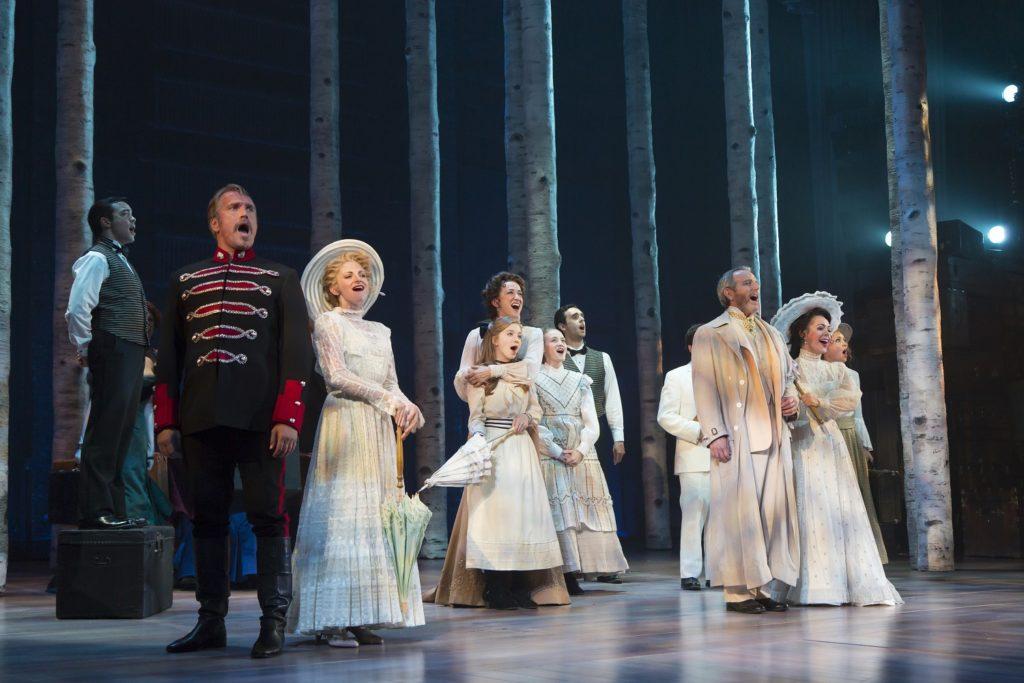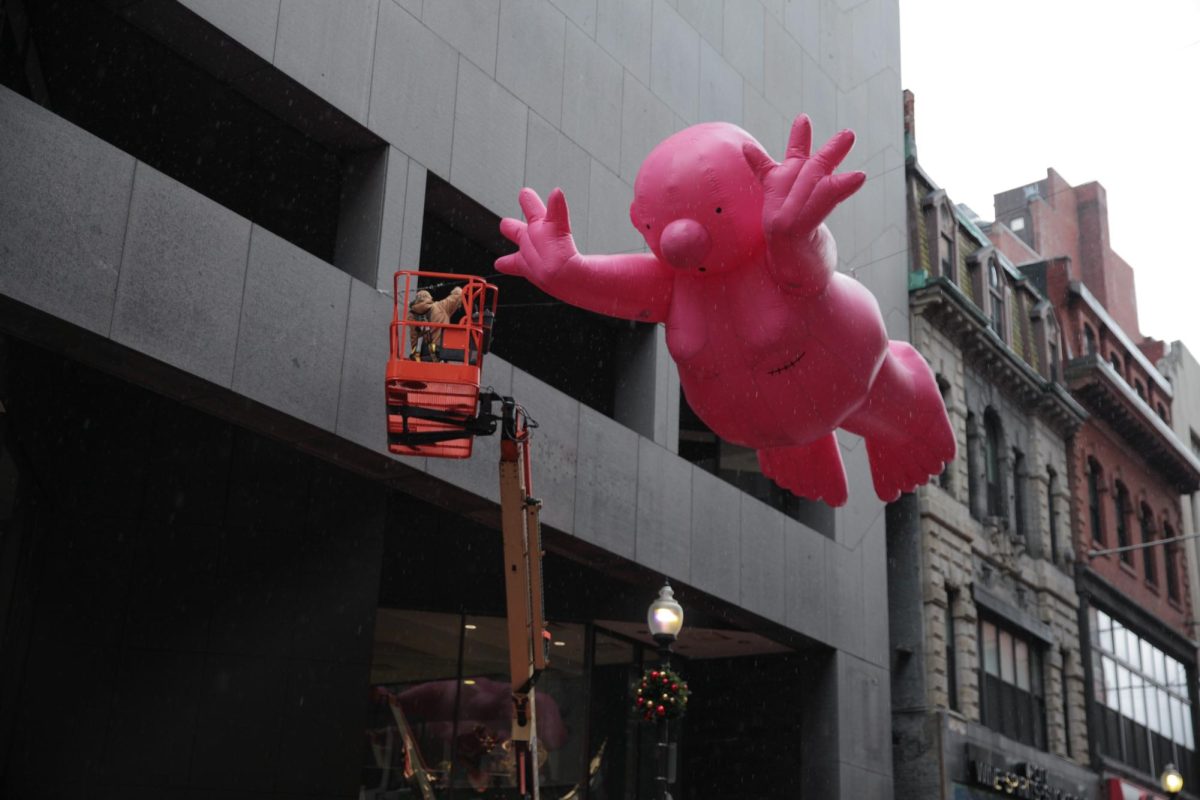By Megan O’Brien, deputy inside editor
Fredrik Egerman (Stephen Bogardus) lifted a glass to his past love interest Desiree Armfeldt (Haydn Gwynne).
“I have always associated you, happily, with chaos,” he said.
“Happy chaos” is a fitting phrase to describe the Huntington Theatre Company’s production of “A Little Night Music,” a musical by Stephen Sondheim, playing at Boston University Theatre.
“It was a lot of fun,” Tamika Wagner, a Boston theatregoer in attendance, said. “Everything is wonderful.”
Set in Sweden at the turn of the 19th century, the musical follows the intertwining romantic lives of six individuals.
The theater welcomed a nearly-full house on Wednesday, Sept. 17 for its press opening night.
Tony Award-nominee Gwynne led the cast as famed actress Desiree Armfeldt, commanding the stage with equal parts energy and maturity.
However, it was Bobbie Steinbach and Lauren Molina who stole the show. Either actress could simply walk on stage and likely elicit a laugh from the audience. Both Steinbach’s rendition of Desiree’s mother, Madame Armfeldt, and Molina’s portrayal of Countess Charlotte Malcolm brought impeccable delivery to their characters’ slew of one-liners.
All cast members held their own and delivered strong performances. Pablo Torres played Fredrik’s son, Henrik, and keyed into the internal conflict of his character. As Henrik bowed his head into his shaking hands during “Later,” a song lamenting his inability to be heard, audience members could be heard emitting sighs of sympathy.
Morgan Kirner played Anne Egerman, Fredrik’s 18-year-old bride, with appropriate naivety.
Anne’s youthfulness was also accentuated by the costuming – she exclusively wore varying shades of pink. To further contrast Fredrik’s two lovers, Desiree wore mainly rich jewel tones.
These color cues were seen in the lighting design as well.
In the first act, Anne’s room is accompanied by warmer light. During the well-known Sondheim tune “Send in the Clowns,” Desiree’s room was lit with colder hues to reflect her distress. At the close of the piece, a single spotlight shone on her while all other lights dimmed, emphasizing her solitude.
“It was the best lighting design I’ve ever seen,” Ali Witten, a Boston theatregoer, said. “If you’re not seeing this show in Boston, you’re wasting your time. [Lighting designer] Jeff Croiter is a genius.”
The more technical elements of the show were also praised by those in attendance.
The performance opened on a sparsely-decorated stage that looked almost industrial but became more complex as the musical progressed. Curtains served as the backdrop for the first act, while a series of tree trunks scattered around the stage served as the setting for the second.
“The scenery was very beautiful,” Abby Phillips, another audience member, said.
The technical and artistic elements went hand-in-hand. In one scene, Desiree Armfeldt played a member of 18th-century French nobility in front of a two-dimensional curtain. The end of the scene was met with pre-recorded applause and cast members applauding in slow motion. This combination of elements, most likely derived from the relationship between designer and director, was successful.
“We promise to make this a gorgeous night,” Artistic Director Peter DuBois said in a press release on Sept. 15. “One that pulsates with love, the complexities of human desire and the mischief one finds on a weekend in the country.”
Keeping true to its title, “A Little Night Music” began with one man at a piano and continued to build, using the full sonic force of its live orchestra and cast. The closing note? One definitive “ting.”
Photos courtesy T. Charles Erickson, Huntington Theatre Company










